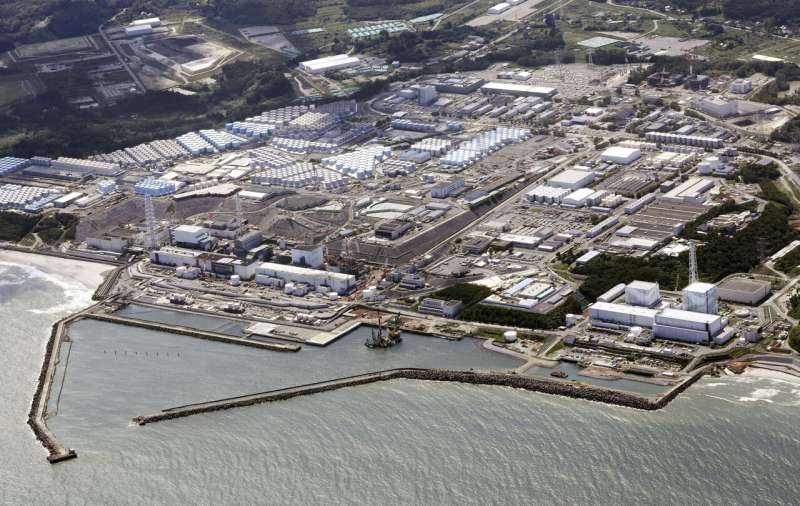This article has been reviewed according to Science X's editorial process and policies. Editors have highlighted the following attributes while ensuring the content's credibility:
fact-checked
reputable news agency
proofread
A small drone flies into a damaged Fukushima nuclear reactor for the first time to study melted fuel

A drone small enough to fit in one's hand flew inside one of the damaged reactors at Japan's Fukushima Daiichi nuclear power plant Wednesday in hopes it can examine some of the molten fuel debris in areas where earlier robots failed to reach.
Tokyo Electric Power Company Holdings also began releasing the fourth batch of the plant's treated and diluted radioactive wastewater into the sea Wednesday. The government and TEPCO, the plant's operator, say the water is safe and the process is being monitored by the International Atomic Energy Agency, but the discharges have faced strong opposition by fishing groups and a Chinese ban on Japanese seafood.
A magnitude 9.0 quake and tsunami in March 2011 destroyed the plant's power supply and cooling systems, causing three reactors to melt down. The government and TEPCO plan to remove the massive amount of fatally radioactive melted nuclear fuel that remains inside each reactor—a daunting decommissioning process that's been delayed for years and mired by technical hurdles and a lack of data.
To help on data, a fleet of four drones were set to fly one at a time into the hardest-hit No. 1 reactor's primary containment vessel. TEPCO plans to probe a new area Thursday.
TEPCO has sent a number of probes—including a crawling robot and an underwater vehicle—inside each reactor but was hindered by debris, high radiation and the inability to navigate through the rubble, though they were able to gather some data. In 2015, the first robot to go inside got stuck on a grate.
Wednesday's drone flight comes after months of preparations that began in July at a nearby mock facility.
The drones, each weighing 185 grams (6.5 ounces), are highly maneuverable and their blades hardly stir up dust, making them a popular model for factory safety checks. Each carries a front-loaded high-definition camera to send live video and higher-quality images to an operating room.
In part due to battery life, the drone investigation inside a reactor is limited to a 5-minute flight.
TEPCO officials said they plan to use the new data to develop technology for future probes as well as a process to remove the melted fuel from the reactor. The data will also be used in the investigation of how the 2011 meltdown occurred.
On Wednesday, two drones inspected the area around the exterior of the main structural support in the vessel, called the pedestal. Based on the images they transmitted, TEPCO officials decided to send the other two in Thursday.
The pedestal is directly under the reactor's core. Officials hope to film the core's bottom to find out how overheated fuel dripped there in 2011.
About 880 tons of highly radioactive melted nuclear fuel remain inside the three damaged reactors. Critics say the 30- to 40-year cleanup target set by the government and TEPCO is overly optimistic. The damage in each reactor is different, and plans need to accommodate their conditions.
TEPCO's goal is to remove a small amount of melted debris from the least-damaged No. 2 reactor as a test case by the end of March by using a giant robotic arm. It was forced to delay due to difficulty removing a deposit blocking its entry.
As in the past three rounds of wastewater discharges which started in August, TEPCO plans to release 7,800 metric tons of the treated water through mid-March after diluting it with massive amounts of seawater and sampling it to make sure radioactivity is far below international standards.
China's Foreign Ministry spokesperson Mao Ning on Wednesday accused Japan of risking the whole world with "nuclear-contaminated water" and demanded it stop "this wrongdoing." Mao urged Japan to cooperate in an independent monitoring system with neighboring countries and other stakeholders.
© 2024 The Associated Press. All rights reserved. This material may not be published, broadcast, rewritten or redistributed without permission.



















